Don't leave home (or work) without them
Maintenance-call Musts
Clean it Up
The number one and number two things that I can’t function without are a good spray cleaner and microfiber towels – clean microfiber towels.
It sounds basic, but you’re at the end of the job and it’s immaculate and looks like glass, but you have some residue or smudges or a little bit of cleanup, if you don’t have your spray cleaner and your microfiber, what are you going to do?
You don’t need any special type of cleaner. Even a solvent will do it, most of the time. A good cleaner will break down the slurry and the splatter. Just water doesn’t cut it, but a good daily stone and quartz cleaner is good.
You just don’t want anything with a lot of polish that will leave a residue. The stone-specific cleaners are so much more readily available than they used to be, there’s no reason not to use a stone cleaner.
When it comes to microfiber towels, what I’ve found over the years is the best-quality ones – the best bang for the buck and not a cheap towel – are the ones at Costco. They’re thicker and bigger than anything else.
Sure, you can go to an automotive store and spend $10 on one giant cloth, but if you’re going through them daily, I find the basic Costco work the best. They’re right next to their white terrycloth ones in the aisle, so you can spend $100 on five packs of rags, and then we just throw them away rather than washing them. (Each pack holds, so it's a huge per-towel expense of about 56¢.)
Many fabricators use white T-shirt rags or paper towels, but they give me anxiety. Even white terrycloth can only do so much. Microfiber really picks up the last little bit of residue, and there are plenty of other places besides Costco to get them. And, I always have a rag drum in the truck to keep 'em handy.
Trash bags are another thing that’s critical that people forget. When you get a bunch of tape with silicone on it, even if you have a drop cloth, you don’t want to roll it up into the drop cloth so it’s nasty for next time. Or, if you’re done with a bathroom refinish and you have a whole bunch of trash and you sweep up a bunch of grit, if you don’t have a trash bag, it’s horrible.
You can ask your homeowner and with most of them it will be okay, but you don’t want to ask your homeowner for things you should have in your van.
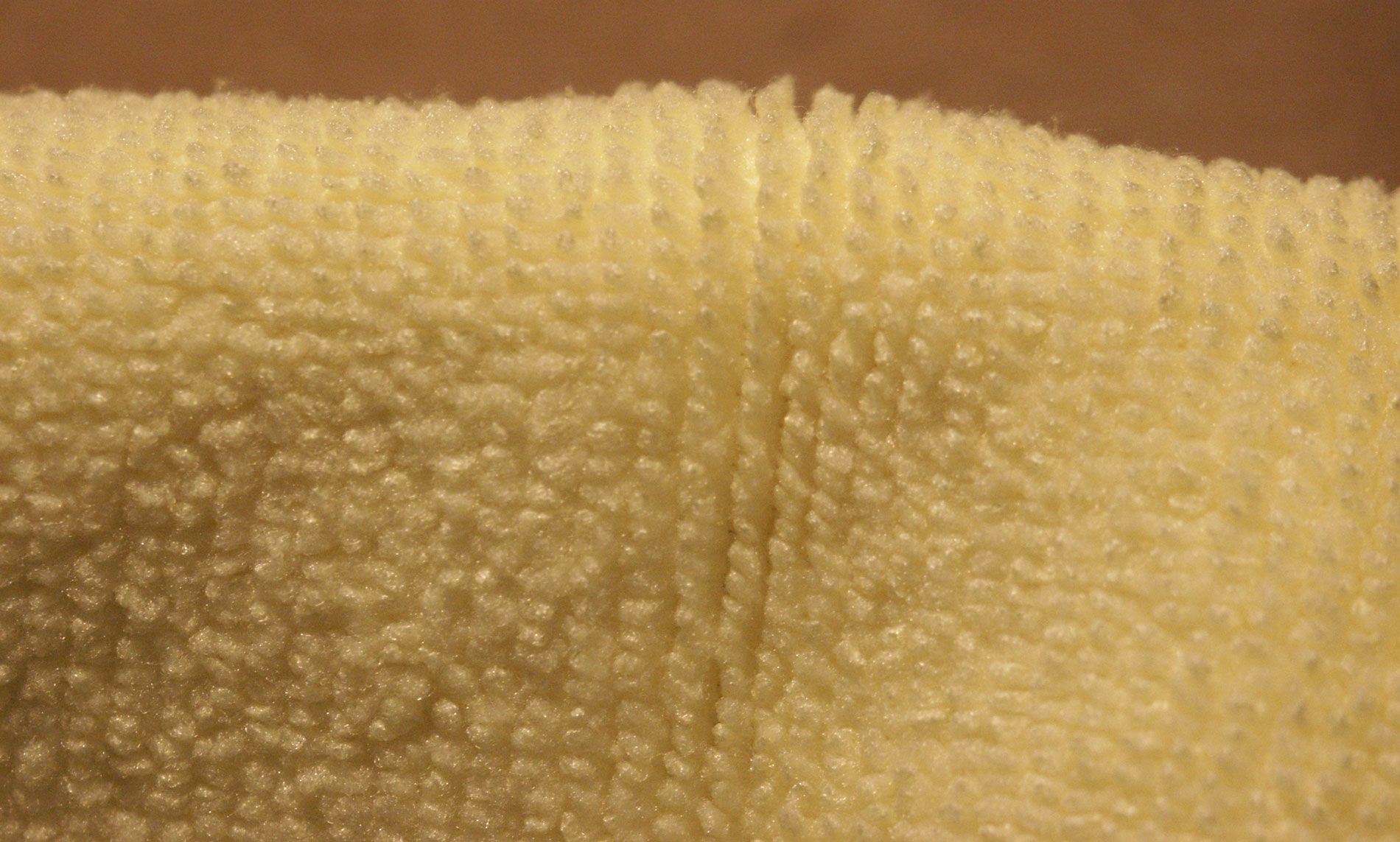
(Above) It's the nice, thick nap of microfiber towels that manages to catch all the residue when wiping down a counter. (Below) There are plenty of pro-grade stone cleaners out there to do the job, as well as general retail brands. (Yes, that's my brand from Easy Stone Care on the left.)
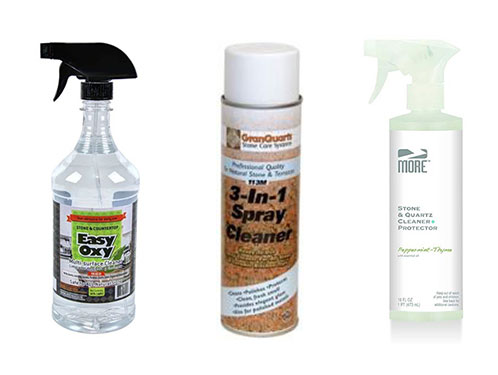
Keep Your Powder Handy
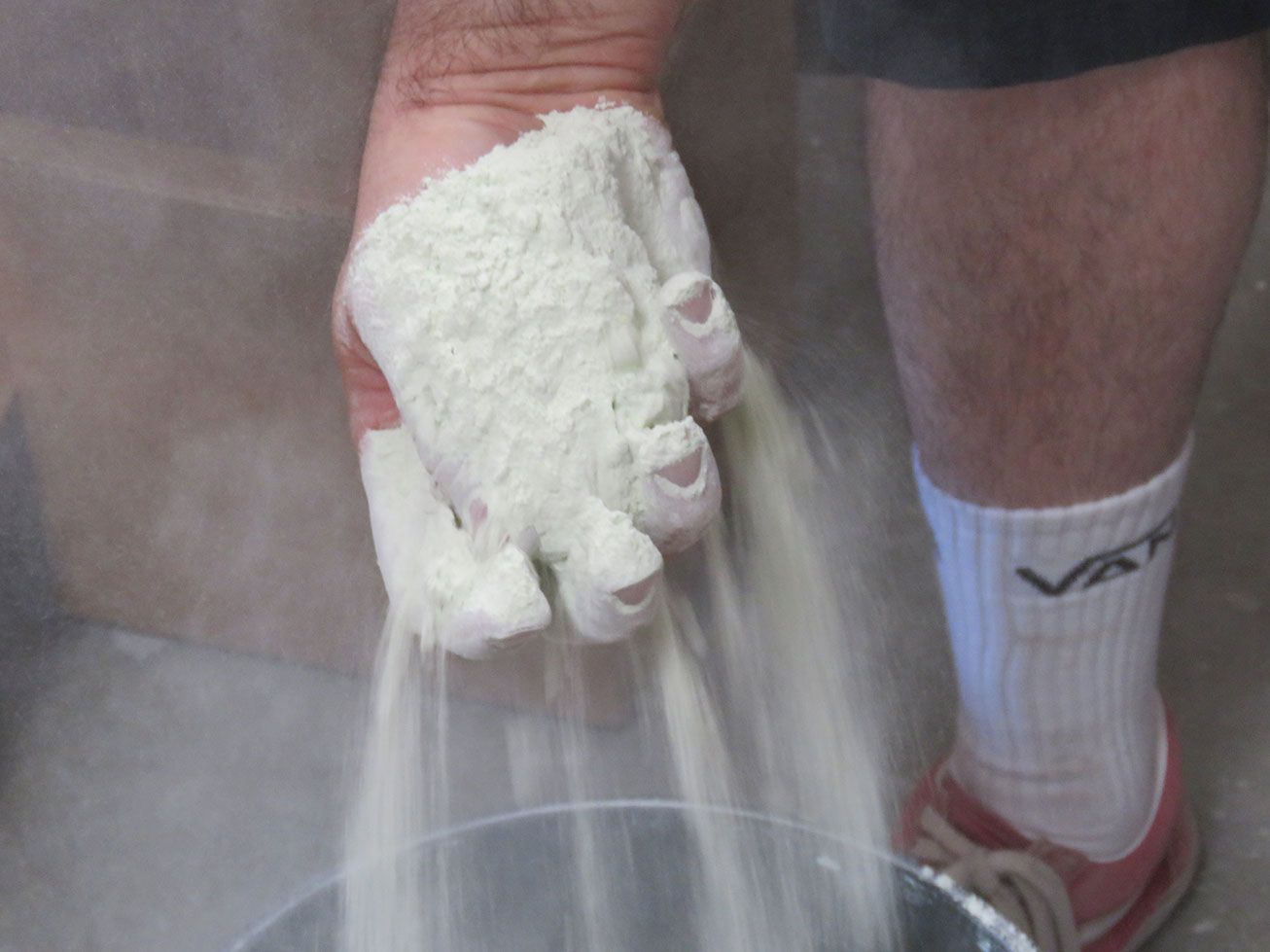
Another thing I always like to have is polishing powder – really a little polishing kit – even if it’s just something that you can rub in by hand to test a couple areas. If nothing else, it will show if there’s a haze over a countertop or floor and how bad it is.
I had one job where the wrong cleaner was used on a very highly polished travertine and it etched the surface everywhere. As it dried, it shrank and etched patches into the floor. Typically, with etches, you’d refinish it and polish it, but we did a test by hand to see how much the polishing powder would do.
We determined we were able to powder polish it with one step without having to use any abrasives and restore the finish. Not only did it save the customer a lot of money, but it was an emergency type call; we were able to get the floor back and ready for a party the next day.
In some cases, you can use a little polishing kit to test if you really do need abrasives. Most of the time you’ll be able to tell by looking at it, but sometimes it’s good to know if simple polishing will remove the haze and yield a presentable finish.
It’s especially true with denser marbles. A lot of people will put lot of sealer on it thinking it will be absorbed, but what happens is they end up with film and cured residue on the surface, and cleaning isn’t going to do anything but smear it around. Polishing powder will not only remove the sealer, but it will expose the proper polish. It’s a little trick you can quickly go through on a floor that looks like it’s hammered and fix it.
Blade at the Ready
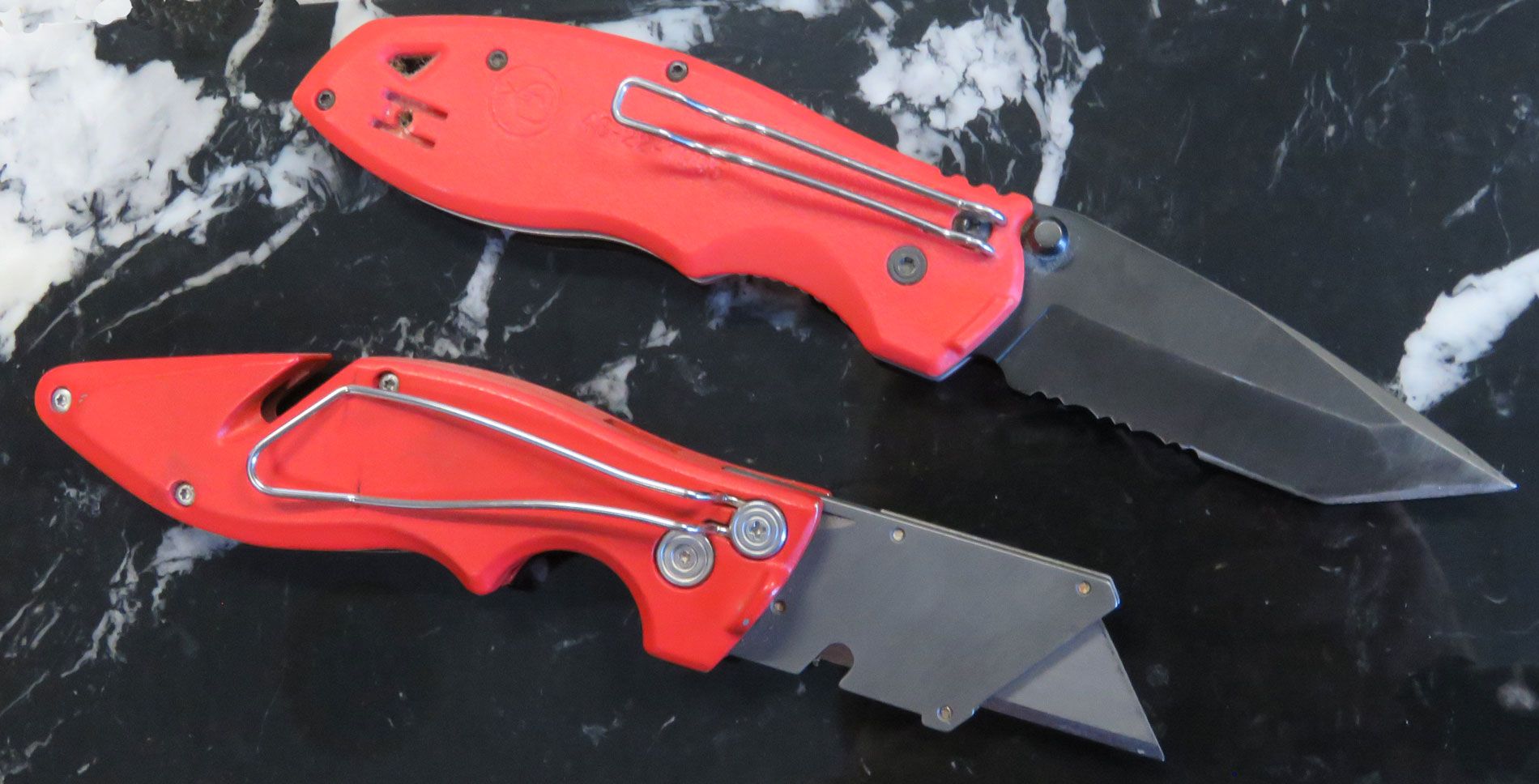
Actually, I carry two types of Milwaukee flip-open knives. The top one has a permanent blade with a double-edge point and a serrated for tough cuts like rope. The bottom one uses throw-away utlity blades; the top line model also stores spare blades in the handle.
A knife is extremely important, if anything just to test certain things. For instance, if there’s a moisture concern in a shower, you can cut out a little bit of grout, you can poke around that grout and see if it was done correctly. Or, if you just give a gentle push with a knife and the grout caves in on the floor, you know there’s a major issue there.
I use a Milwaukee (Tool®). It’s essentially like a box cutter but it’s a flip-open knife with the double-sided utility blades. And, I have packs of blades everywhere. The blades don’t last that long; they’re made for drywall, but I use them to remove grout.
It sounds funny, but in some situations with non-sanded grout, I will refinish the floor, polish it, be 100 percent done with the refinishing, and then remove and replace the grout. It’s only the grout that needs to be removed, but if it needs to be removed its’s easier to remove with a knife, and if you replace the grout first, you end up waiting two weeks and then coming back. I have a short video on YouTube that shows a very specific way of doing it.
The knife has many functions. For the most part it’s just for opening stuff, scratch-testing marble, testing grout, cutting, checking for water, scraping. You can take the blade out and scrape for a coating, scrape off soap scum. It’s a $10-$20 knife, but by having the knife and doing little things, sometimes it’s enough that it can convince a client to hire you.
Pictures can Save Your A**
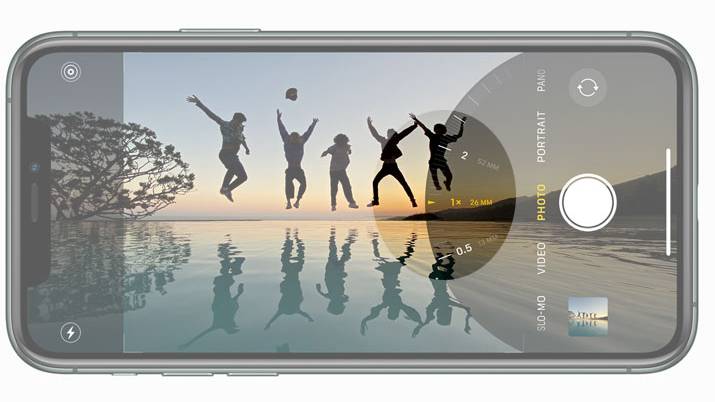
Wide-angle camera lenses are perfect for getting full images in small spaces like bathrooms. (Above) Apple's IPhone 11 Pro is only one of the newer phones to feature multiple lenses that can take wide and superwide photos; changing lenses is a simple on-screen function. (Below) For digital single-lens-reflex (DSLR) cameras, a wide-angle lens is a must; some lenses offer a reverse zoom from regular to wider perspectives.
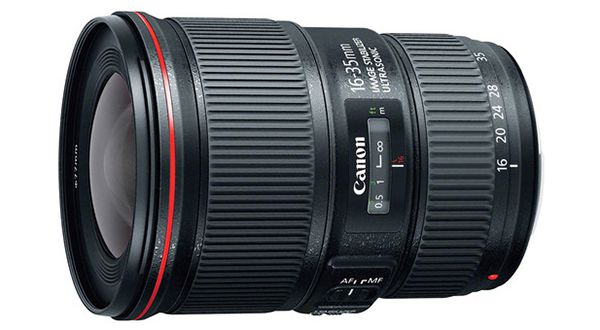
Those are tools that do the job, but there’s one non-tool that’s very important to me, and that’s a camera.
For example, if a shower has moisture issues, it’s hard to see a moisture pattern in the shower in person. When we’re diagnosing a shower-pan issue where we’re not convinced it’s the pan, we’ll keep track of the receding water pattern, and taking pictures of that makes it simple. You take a picture, come back a week later and take another picture and then put them side-by-side and that gives the answer.
You’re also better off taking pictures before a job if you notice existing damage. I’ve been screamed at ,only to show the customer that I noticed this beforehand and took a picture. It’s not that they’re deliberately trying to blame you for something they know you didn’t do, but after refinishing a floor or countertop everything looks so good that it makes the other stuff stand out.
The camera on most cellphones is so good now that if you’re just taking before-and-after pictures that’s going to be good. But, the new cellphone double-and-triple lens things are pretty crazy; it’s insane how far they’ve come.
I have a DSLR camera, and I bought a very wide-angle lens specifically for bathrooms and small areas so I could get the whole thing. With that I can show before-and-after pictures and it captures everything.
If you’re going to invest in camera equipment, get a very wide-angle lens, but also something you can set up on a tripod and do videos. Those can be important for marketing and sales purposes, plus some people question photos, but on a video there’s actual real-time stamp, plus you can edit it and make super fancy photos.